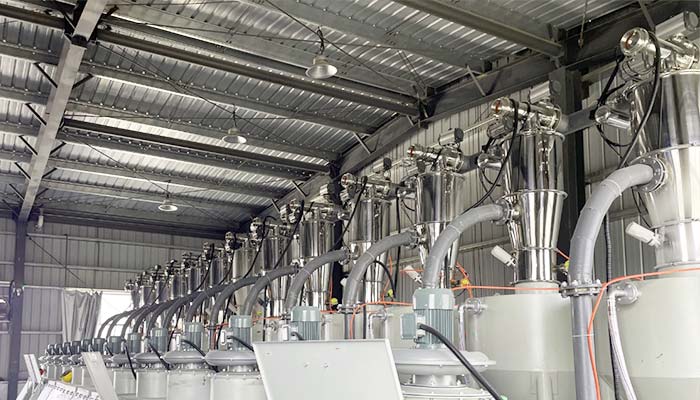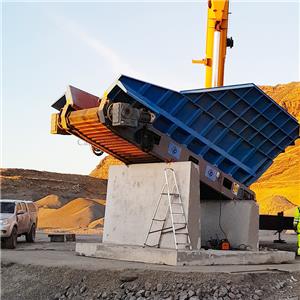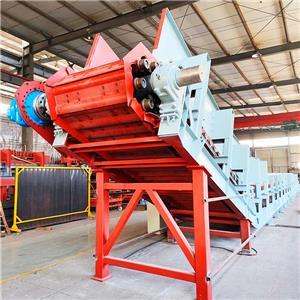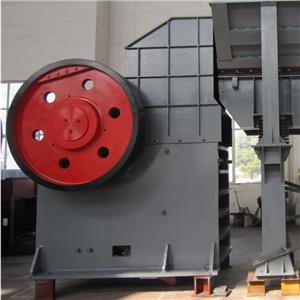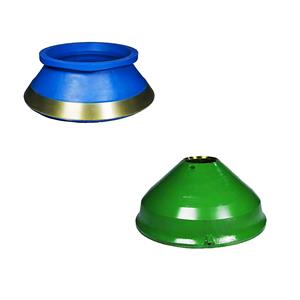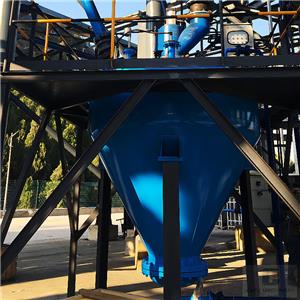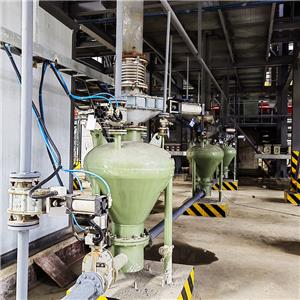- Home
- >
- News
- >
- Company news
- >
- Explosion-Proof Design of Powder Pneumatic Conveying Systems
Explosion-Proof Design of Powder Pneumatic Conveying Systems
In industrial production, powder pneumatic conveying systems are widely used in chemical, food, pharmaceutical, new energy and other industries to efficiently transport powdery materials through air flow in closed pipelines. However, when the conveyed powder is flammable, it may cause an explosion once it encounters an ignition source, resulting in serious casualties and property losses. Therefore, scientific and reasonable explosion-proof design for powder pneumatic conveying systems is crucial.
Provisions on Explosion-Proof Ratings
Explosion-proof rating is an important indicator to measure the safety performance of equipment in explosive environments. In dust explosion hazardous environments where powder pneumatic conveying systems are located, the international general IEC 60079 series standards divide dust explosion hazardous areas into three zones:
● Zone 20: Places and container interiors where combustible dust clouds continuously or frequently occur during normal operation in sufficient quantities to form a combustible dust-air mixture, or where uncontrolled and extremely thick dust layers may form.
● Zone 21: Places where combustible dust clouds may occasionally occur during normal operation in sufficient quantities to form a combustible dust-air mixture but are not classified as Zone 20.
● Zone 22: Places where combustible dust clouds may occasionally occur under abnormal conditions and only exist for a short time, or where accumulations of combustible dust may occur with possible dust layers, and combustible dust mixtures may be produced in the air but are not classified as Zone 21. If it cannot be ensured that combustible dust accumulations or dust layers are excluded, it should be classified as Zone 21.
The explosion-proof rating mark of equipment must match the area where it is located. For example, in the common dust explosion-proof mark "Ex tb ⅢC T135°C Db", "Ex" is the international general explosion-proof symbol; "tb" indicates the enclosure protection type, applicable to Zone 21 and Zone 22, which limits dust from entering the equipment through the enclosure and prevents internal sparks or high temperatures from being transmitted to the outside to ignite dust clouds; "ⅢC" represents that it is applicable to conductive dust; "T135°C" means the maximum surface temperature of the equipment is ≤135°C, which must be lower than the minimum ignition temperature of the contacted dust; "Db" indicates that the equipment protection level is applicable to Zone 21.
Differences in Standards between Conductive and Non-Conductive Dusts
According to the resistivity of dust, it can be divided into conductive dust (resistivity greater than 1kΩ·m) and non-conductive dust (resistivity equal to or less than 1kΩ·m). These two types of dust have many differences in explosion-proof standards:
Requirements for Electrical Equipment Protection
● Conductive dust: Since conductive dust can conduct charges quickly, once static electricity is generated, it is easy to accumulate and cause sparks. Therefore, electrical equipment used in conductive dust environments must have stricter anti-static measures. For example, the equipment enclosure is usually made of metal and reliably grounded, and the grounding resistance is generally required to be less than 10Ω to ensure that static electricity can be quickly conducted to the ground. At the same time, the internal circuit design of the equipment must also consider preventing electric sparks generated by electrical faults from contacting the dust. For example, in the production of lithium battery negative electrode materials, pneumatic conveying of graphite powder (conductive dust) is often involved, and the electrical equipment in the system must be selected and installed in strict accordance with the explosion-proof standards for conductive dust.
● Non-conductive dust: Although non-conductive dust itself is not conductive, static electricity may also be generated by friction between dust and the inner wall of pipelines and equipment during pneumatic conveying. However, relatively speaking, the risk of static electricity accumulation and discharge is relatively low. For electrical equipment in non-conductive dust environments, the focus of protection is to prevent dust from entering the equipment, and the enclosure protection level of the equipment is usually required to reach IP5X or higher to avoid dust accumulation affecting the normal operation of the equipment or igniting dust due to heat generated by internal electrical components.
Explosion-Proof Structural Design
● Conductive dust: To prevent conductive dust from entering the equipment to form a conductive path, causing short circuits or spark discharges, the explosion-proof structural design of the equipment is more rigorous. For example, the joint of the electrical equipment enclosure may adopt a special sealing structure, such as a labyrinth seal, to reduce the possibility of dust entering. At the same time, parts such as the junction box and cable entry device of the equipment must also be specially designed to ensure that dust cannot invade.
● Non-conductive dust: The explosion-proof structural design focuses on preventing dust accumulation and heat dissipation. The equipment enclosure can be designed as a smooth surface easy to clean to reduce dust adhesion. For some equipment that may generate high temperatures, such as motors, more effective heat dissipation devices will be equipped to ensure that the surface temperature of the equipment is always lower than the ignition temperature of the dust.
Suggestions for Selection of Electrical Equipment
In powder pneumatic conveying systems, the correct selection of electrical equipment is a key link to achieve explosion-proof. When selecting, it is necessary to comprehensively consider factors such as dust characteristics, hazardous area classification, and equipment operating environment:
Selection Based on Dust Characteristics
As mentioned above, for conductive dust, electrical equipment with good anti-static performance should be selected, such as motors with special anti-static coatings, sensors equipped with static elimination devices, etc. For non-conductive dust, the focus is on the dust-proof performance of the equipment, and dust-proof motors and control switches with good sealing can be selected.
Selection Based on Hazardous Area Classification
Electrical equipment in Zone 20 must have the highest level of explosion-proof performance, and intrinsic safety type (Ex ia, Ex ib) or special type (Ex s) equipment is usually selected. For Zone 21, enclosure protection type (such as Ex tb), positive pressure type (Ex p) and other equipment can be selected. Zone 22 has relatively lower explosion-proof requirements, but equipment that meets the corresponding standards, such as dust protection type (Ex tc), is still required. For example, in a pneumatic conveying system for flour (non-conductive dust), if some areas are classified as Zone 21, Ex tb type motors and control equipment can be selected to effectively prevent explosions even if a small amount of dust appears during normal operation.
Consideration of Equipment Operating Environment
If the equipment operating environment has factors such as high temperature, humidity, and corrosive gases, electrical equipment with corresponding protective performance must be selected. For example, in high-temperature environments, the insulating materials of the equipment must have high-temperature resistance; in humid environments, the equipment should have good waterproof and moisture-proof performance to ensure that the equipment can operate normally in complex environments without reducing explosion-proof performance.
CAFU Machinery: Professional Solution Provider for Powder Pneumatic Conveying Systems
CAFU Machinery has rich experience and excellent professional capabilities in the design of powder pneumatic conveying systems. The company focuses on providing customers with customized powder pneumatic conveying solutions, from system planning, equipment selection to installation and commissioning, with one-stop service to ensure efficient, stable and safe conveying process.
CAFU Machinery's design team has an in-depth understanding of the characteristics of various powders and the production needs of different industries, and can accurately grasp the key points of explosion-proof design to create pneumatic conveying systems that meet international explosion-proof standards for customers. Whether dealing with conductive dust or non-conductive dust, CAFU Machinery can ensure the reliable operation of the system in hazardous environments with advanced technology and high-quality equipment.
If you have any need in the design of powder pneumatic conveying systems, whether it is a new project or the upgrading and transformation of existing systems, CAFU Machinery will be your trustworthy partner. Welcome to contact us at any time to work together to create a safe and efficient production environment.

